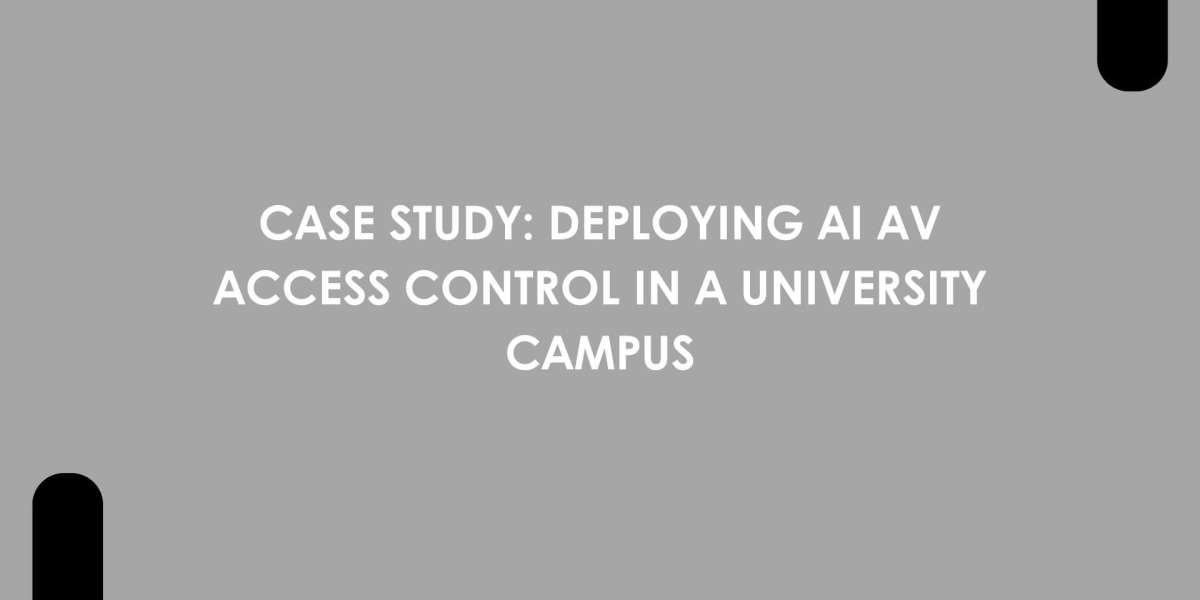Universities today face unique security challenges. With sprawling campuses, thousands of students, faculty, and staff, and numerous buildings containing valuable equipment and sensitive information, maintaining secure yet accessible environments is complex. Traditional access control systems often fall short in handling such scale and complexity efficiently.
To meet these evolving needs, one leading university turned to an AI-powered AV access control system to enhance security, improve user experience, and integrate with their existing audiovisual infrastructure. At XTEN-AV, we supported the design and documentation of this groundbreaking deployment. This case study explores the project from conception to completion, highlighting key benefits and lessons learned.
Background and Challenges
The university campus included academic buildings, libraries, research labs, student centers, and residential halls. The institution needed a robust access control solution that could:
Manage access for over 20,000 users including students, faculty, contractors, and visitors
Integrate with existing AV systems for room control and automation
Provide real-time monitoring and analytics
Allow flexible access permissions based on roles, schedules, and locations
Adapt to evolving security threats through intelligent analysis
The existing access control system relied heavily on physical keycards and manual administration, leading to lost cards, unauthorized access incidents, and difficulty coordinating with AV systems. The university sought a modern, AI-enhanced solution that could provide automated decision-making and seamless integration.
Solution Overview
The university selected an AI-powered AV access control system with cloud-based management and mobile credential support. The core features included:
AI-Driven Analytics: The system analyzed access patterns in real time to detect anomalies such as unusual entry times or multiple simultaneous access attempts. Alerts were generated automatically to security teams.
Mobile Credentials: Students and staff used smartphone apps to gain access, reducing reliance on physical cards and enabling remote credential management.
AV Integration: Access events triggered AV systems to power on projectors, displays, and room lighting for classes and meetings, improving user experience and energy efficiency.
Role-Based Access: Permissions were dynamically assigned based on user roles such as student, faculty, visitor, or contractor. Access was restricted by schedule and location for sensitive areas like research labs.
Centralized Cloud Management: Security administrators managed all access points and users from a centralized dashboard with remote capabilities.
Implementation Process
1. Planning and Design
Using XTEN-AV’s design platform, system integrators mapped out all access points, AV devices, and network infrastructure across the campus. This visual plan ensured compatibility between the AI access system and existing AV control processors. User roles and access zones were defined in detail to meet university policies.
2. Hardware Installation
Smart readers compatible with mobile credentials and AI analytics were installed at entrances, labs, and classrooms. Network switches and controllers were configured to handle encrypted data traffic securely. AV control processors were connected to access control events to enable automation.
3. Software Integration
The AI-powered access control software was connected to the university’s identity management system for seamless user synchronization. The mobile credential app was deployed to students and staff with enrollment campaigns and training materials. Integration APIs linked access events with AV system triggers.
4. Testing and Training
Comprehensive testing ensured all systems functioned as intended. The AI algorithms were fine-tuned based on access behavior data collected during the pilot phase. Security personnel and IT teams received hands-on training to manage alerts and troubleshoot.
Results and Benefits
Enhanced Security and Incident Response
The AI system detected and flagged unusual access attempts in real time, such as a user trying to enter restricted labs outside permitted hours. Security teams responded faster to potential threats, reducing unauthorized entry incidents significantly.
Improved User Experience
Mobile credentials eliminated the need for physical cards and queues at access points. Students could access classrooms and activate AV equipment with a single tap, streamlining daily routines.
Energy and Cost Savings
Integrating access control with AV systems enabled rooms to power down automatically when unoccupied, cutting energy consumption by an estimated 25 percent. Centralized management reduced administrative overhead and lost credential costs.
Scalability and Flexibility
The cloud-based platform easily scaled to accommodate new buildings and users. The university could update access policies instantly to adapt to evolving campus needs or emergency situations.
Lessons Learned
Early Integration Planning is Critical: Using XTEN-AV’s design tools early helped avoid compatibility issues and simplified installation.
User Communication Ensures Adoption: Educating students and staff on mobile credential usage improved uptake and reduced support tickets.
AI is a Force Multiplier, Not a Replacement: While AI enhances monitoring, human oversight remains essential for effective security management.
Regular Software Updates Maintain Security: Continuous updates kept the system protected against emerging vulnerabilities.
Conclusion
Deploying an AI AV access control system transformed the university’s approach to campus security. The combination of intelligent analytics, mobile credentials, and AV integration provided a comprehensive, user-friendly solution that met the demands of a modern educational environment.
At XTEN-AV, we are proud to support innovative projects like this by providing the design and documentation tools that help AV and security professionals collaborate efficiently and deliver cutting-edge solutions.
For any organization looking to modernize access control with AI and AV integration, this case study demonstrates the power of careful planning, technology alignment, and user-centric design. The future of secure campuses is intelligent, connected, and seamless.
Read more: https://topbizlists.com/mobile-credentials-in-access-control-the-future-of-keyless-entry/








